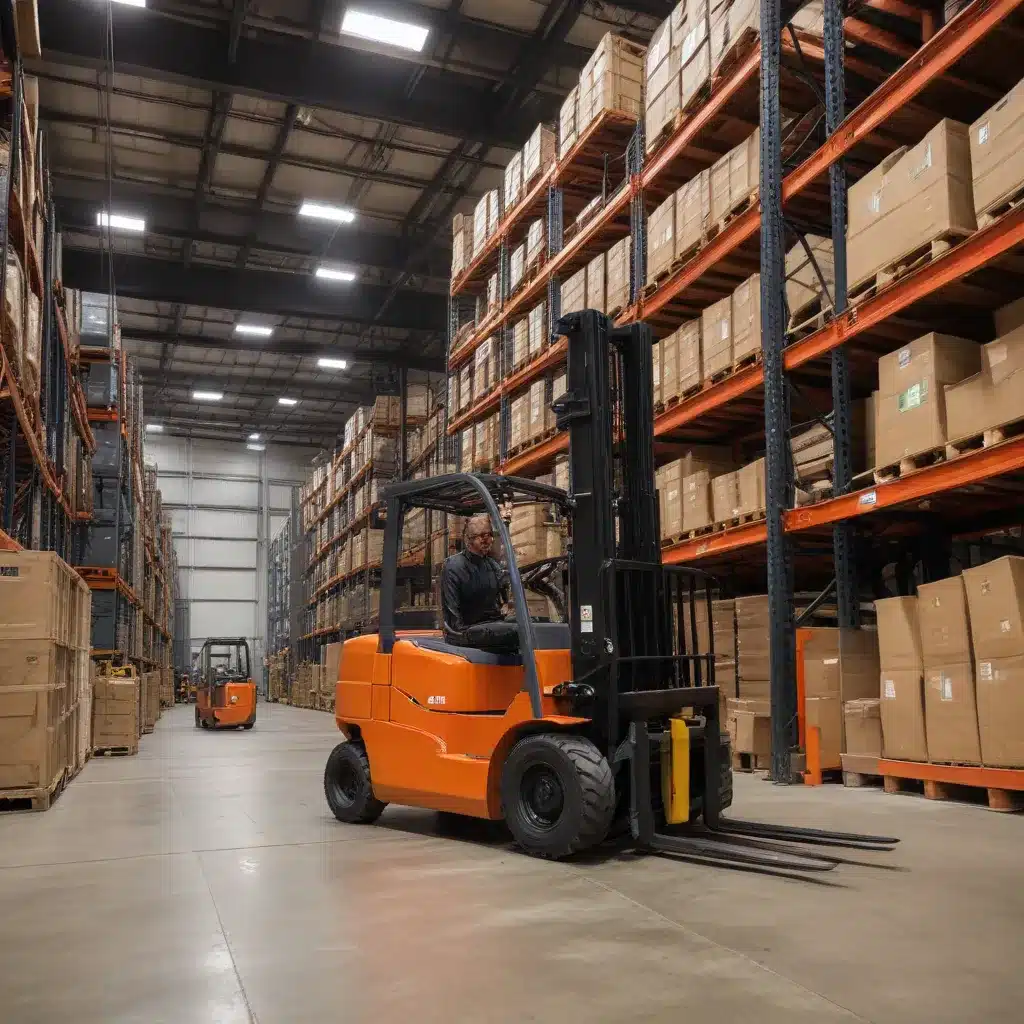
Maintaining Peak Forklift Performance: A Comprehensive Approach
Forklifts are the backbone of efficient warehouse operations, enabling the seamless movement of goods and materials. However, to ensure these essential machines operate at their best, a robust forklift maintenance program is crucial. As a seasoned industry expert, I’ll guide you through the key strategies and best practices for optimizing forklift maintenance, helping you maximize productivity, safety, and cost-effectiveness in your warehouse.
Understanding the Importance of Forklift Maintenance
Forklifts are powerful and versatile machines that can endure heavy use, but without proper care and maintenance, they are susceptible to wear and tear, leading to potential breakdowns and safety hazards. A comprehensive forklift maintenance program offers numerous benefits:
- Enhanced Safety: Regular inspections and maintenance help identify and address potential issues before they escalate, reducing the risk of accidents and injuries.
- Improved Productivity: Well-maintained forklifts operate more efficiently, minimizing downtime and disruptions to your warehouse workflows.
- Extended Lifespan: Proper maintenance extends the usable life of your forklift fleet, allowing you to maximize your investment.
- Cost Savings: Proactive maintenance helps prevent costly repairs and unplanned replacements, leading to significant long-term cost savings.
- Compliance with Regulations: Adhering to maintenance guidelines ensures compliance with industry safety standards and regulations.
Implementing a Forklift Maintenance Program
Developing and implementing an effective forklift maintenance program involves several key steps:
1. Establish a Comprehensive Maintenance Schedule
The foundation of a successful forklift maintenance program is a well-structured schedule that outlines routine tasks and inspections. This should include regular oil changes, filter replacements, brake checks, battery maintenance, and other essential services based on manufacturer recommendations and industry best practices.
2. Train Employees on Proper Maintenance Procedures
Equipping your staff with the knowledge and skills to perform basic maintenance tasks is crucial. Provide thorough training on safety protocols, inspection techniques, and the use of appropriate tools and equipment. Empowering your team to be proactive in forklift care can significantly enhance the program’s effectiveness.
3. Conduct Regular Inspections
Regularly scheduled inspections are essential for identifying potential issues before they escalate. Train your operators to perform daily pre-shift inspections, and ensure that more comprehensive examinations by qualified technicians are conducted at least monthly. Pay close attention to critical components such as tires, brakes, hydraulics, and electrical systems.
4. Utilize Genuine Replacement Parts
When it comes time to replace parts, it’s crucial to use only genuine, manufacturer-approved components. Generic or counterfeit parts may seem more cost-effective in the short term, but they can compromise the forklift’s performance and safety, leading to more significant issues down the line.
5. Maintain Cleanliness and Proper Storage
Keeping your forklifts clean and stored in a suitable environment can significantly extend their lifespan. Regularly clean the engine, filters, radiator, and other components to remove dirt and debris. Ensure the storage area is dry, temperature-controlled, and free from excessive moisture or dust.
6. Partner with a Trusted Maintenance Provider
While in-house maintenance can be effective, consider partnering with a specialized forklift maintenance provider, such as HCO Innovations, to ensure your program is optimized for maximum efficiency. These experts have the necessary tools, expertise, and resources to handle complex repairs, conduct thorough inspections, and provide tailored maintenance solutions.
Optimizing Forklift Battery Maintenance
One critical aspect of forklift maintenance is the proper care and upkeep of the battery, which is the power source for these machines. Whether you’re using traditional lead-acid or advanced lithium-ion batteries, following these best practices can help optimize their performance and lifespan:
- Regular Charging: Charge the battery after each shift, keeping it at a full state of charge to avoid deep discharges that can damage the battery.
- Temperature Control: Store the battery in a cool, well-ventilated area to prevent overheating, which can reduce the battery’s capacity and lifespan.
- Cleaning and Inspection: Regularly clean the battery terminals and connections to prevent corrosion, and visually inspect for any signs of damage or wear.
- Proper Charging Equipment: Use a charger specifically designed for the type of battery in your forklifts to ensure safe and efficient charging.
- Avoid Overcharging: Follow the manufacturer’s guidelines and disconnect the charger once the battery is fully charged to prevent overcharging, which can also harm the battery.
By implementing these battery maintenance best practices, you can extend the useful life of your forklift’s power source, reducing replacement costs and ensuring consistent, reliable performance.
Tracking and Optimizing Maintenance Efforts
To ensure your forklift maintenance program remains effective, it’s essential to track and analyze relevant data. Consider implementing a computerized maintenance management system (CMMS) or specialized fleet management software, such as iWAREHOUSE from Raymond Corporation. These tools can help you:
- Centralize Fleet Information: Organize and maintain a comprehensive database of your entire forklift fleet, including maintenance histories, costs, and performance metrics.
- Optimize Maintenance Schedules: Use data-driven insights to fine-tune your maintenance schedules, ensuring tasks are performed at the most appropriate intervals.
- Identify High-Cost Units: Analyze maintenance expenses to pinpoint forklifts that are incurring disproportionately high costs, allowing you to make informed replacement decisions.
- Maintain Visibility on Leases: Keep track of lease expiration dates and plan for timely replacements or renewals to avoid disruptions.
By leveraging these technological solutions, you can make data-driven decisions, optimize your forklift maintenance program, and achieve greater efficiency and cost-savings in your warehouse operations.
Conclusion
Maintaining a well-designed forklift maintenance program is essential for ensuring the safety, productivity, and longevity of your warehouse operations. By implementing a comprehensive approach that includes scheduled maintenance, employee training, regular inspections, genuine parts, and strategic partnerships, you can maximize the performance of your forklift fleet and unlock significant operational and financial benefits.
Remember, proactive forklift maintenance is not only a smart business decision but also a crucial step in creating a safe and efficient warehouse environment. Embrace these best practices and leverage the expertise of industry leaders like HCO Innovations to take your warehouse optimization to new heights.

